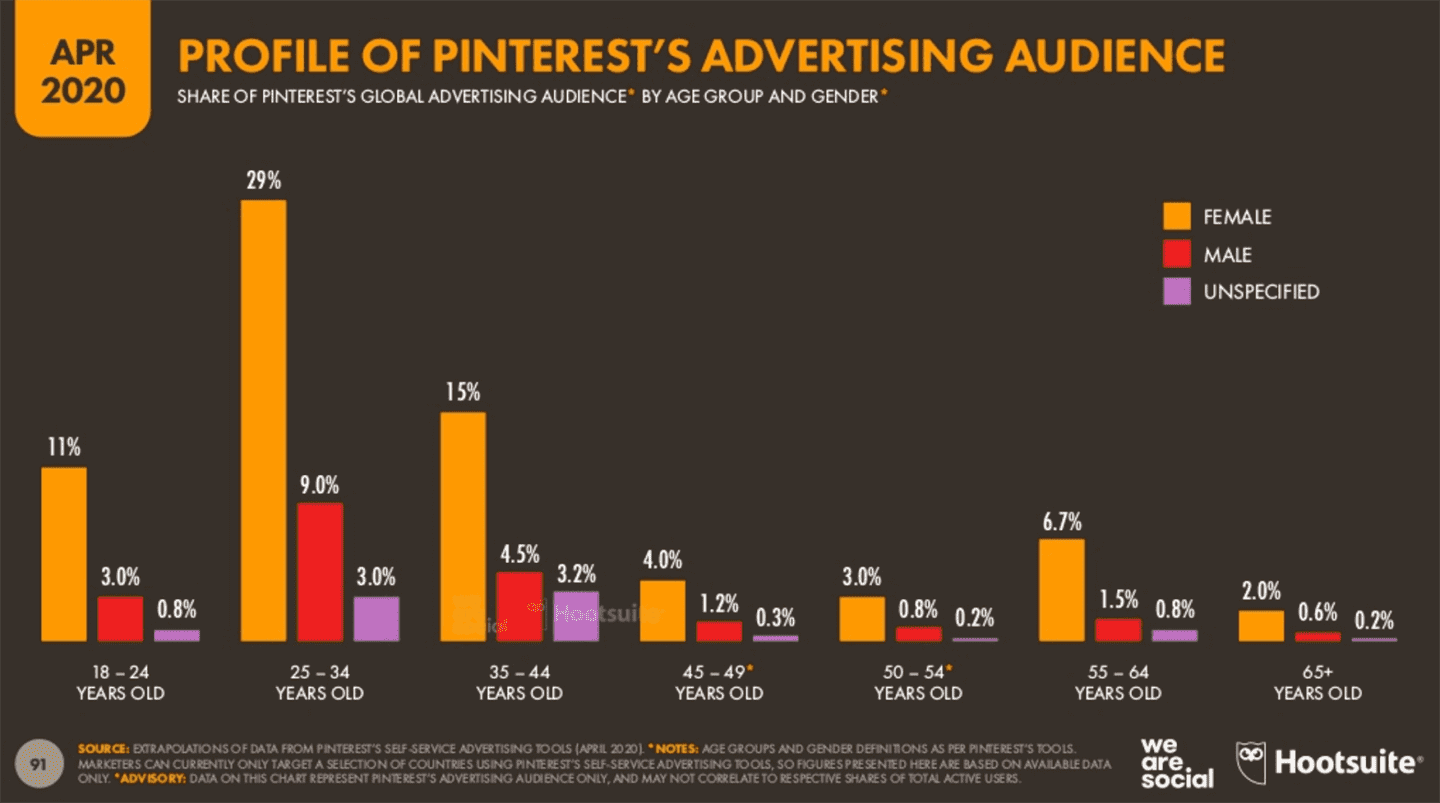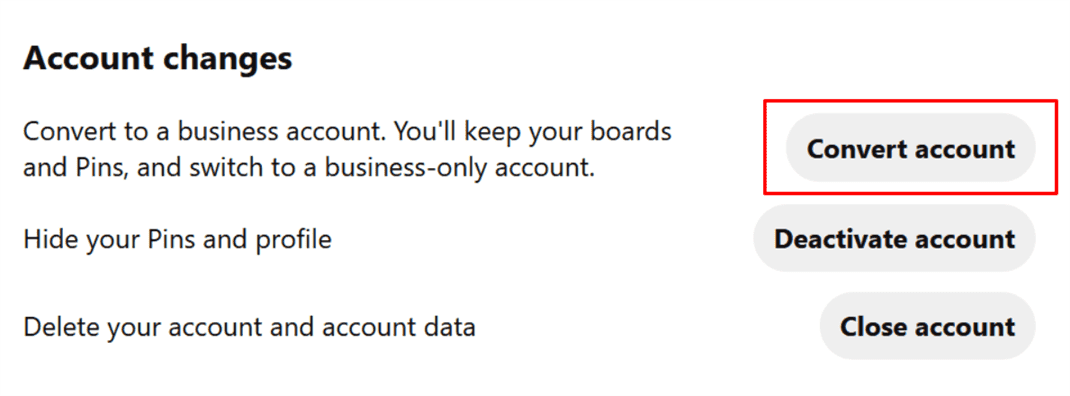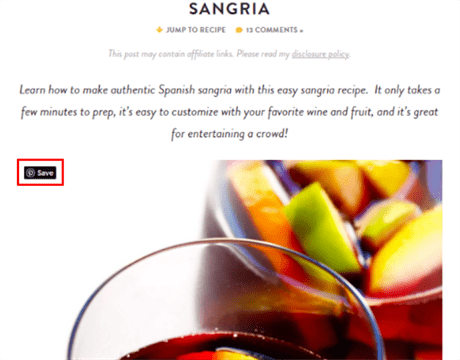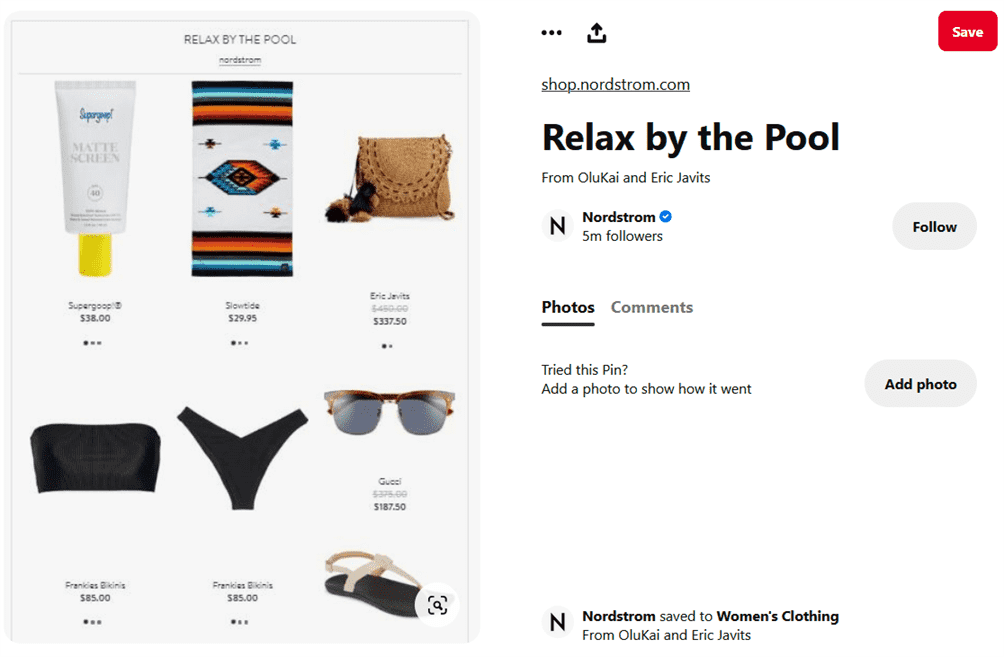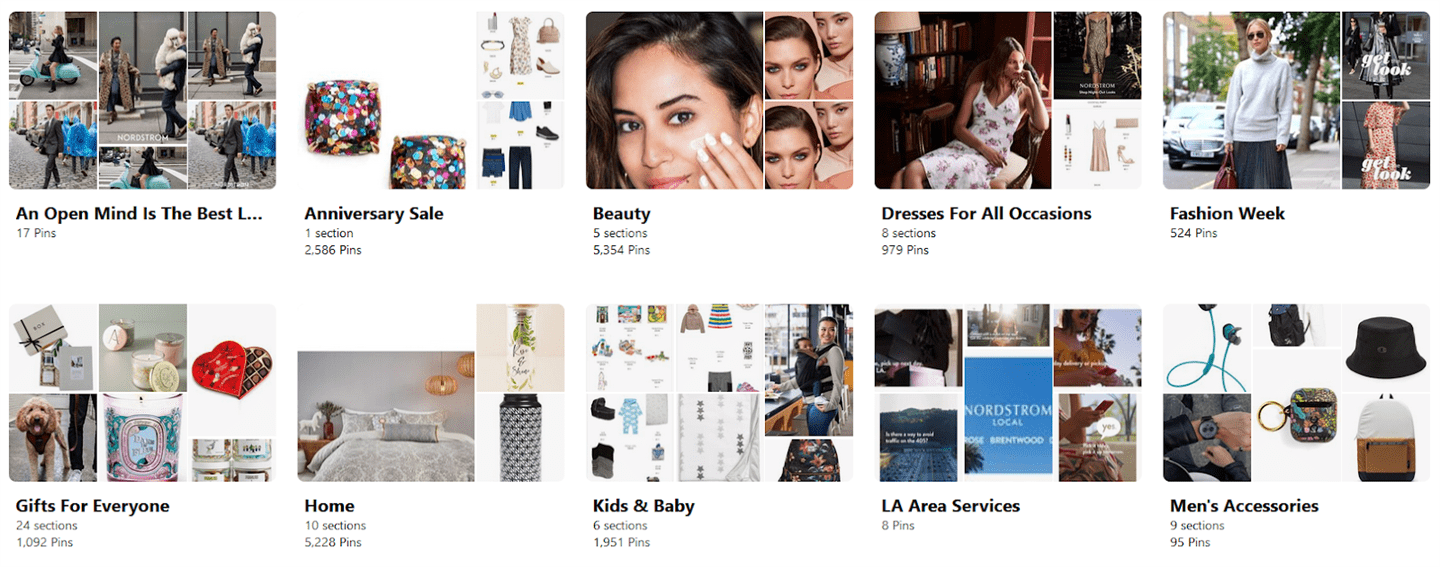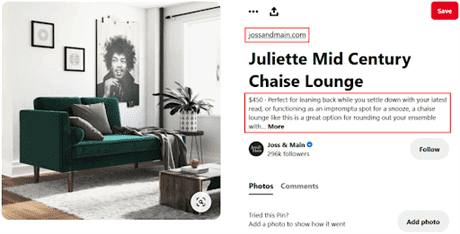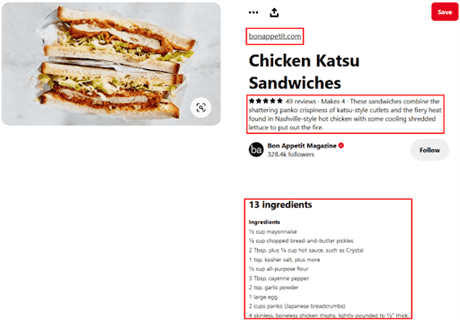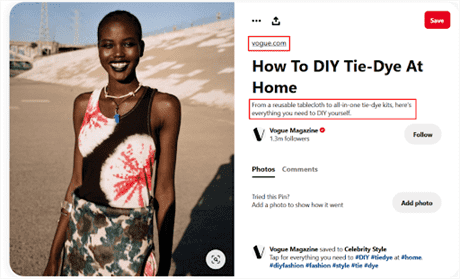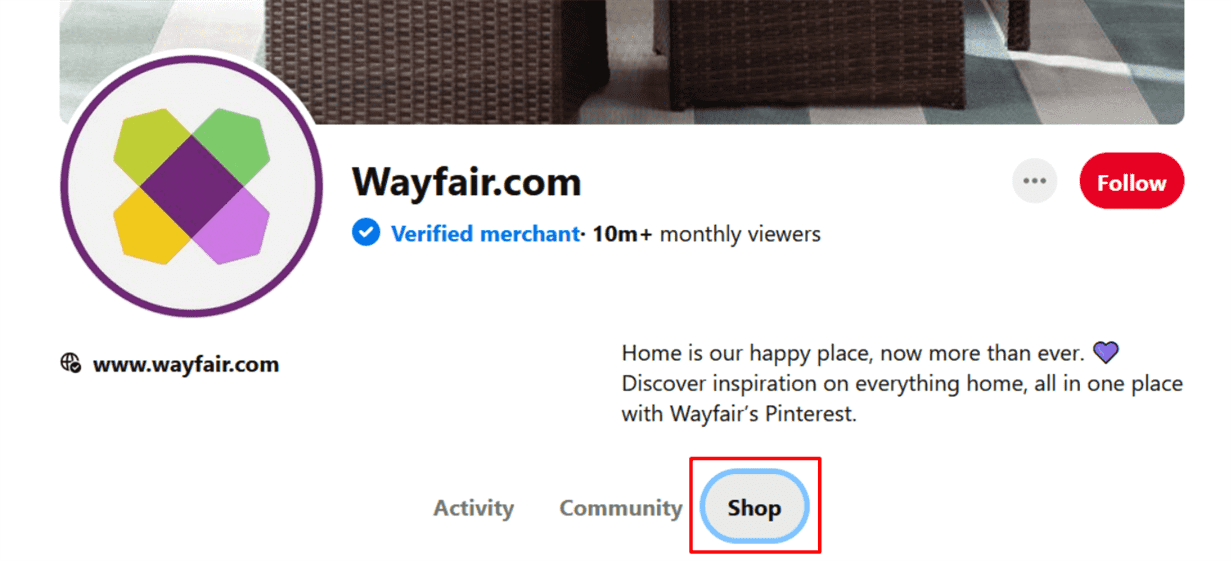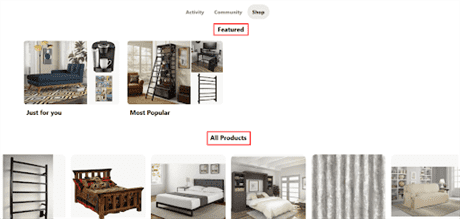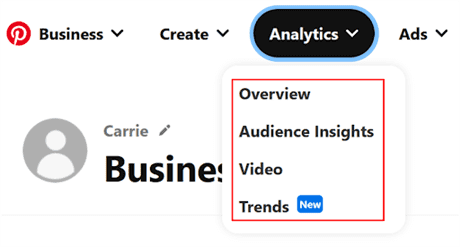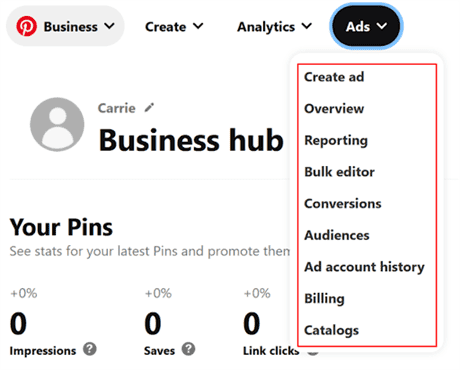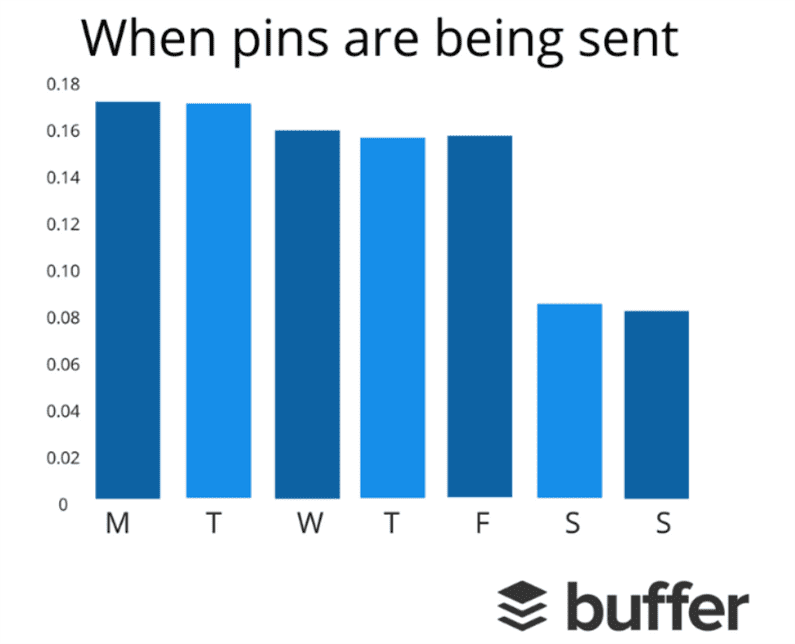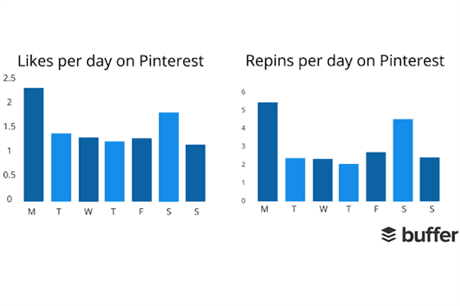In the world of SEO, Pinterest is woefully underrated. You may even be under the impression that content consisting of anything other than style inspiration and crafting tutorials isn’t suited for the platform, and if you’ve never used Pinterest yourself, we don’t blame you. Upon closer inspection, though, it’s clear Pinterest is chock-full of potential for SEO growth.
By utilizing a few simple tactics, you can create a Pinterest SEO strategy that runs like a well-oiled machine. Want to generate site traffic, connect with users on a deeper level and build brand recognition? It’s time to start giving Pinterest the attention it deserves and achieve the results you want.
The Unique Power of Pinterest SEO
Pinterest calls itself a visual discovery engine, while elsewhere it’s been referred to as a social media site, an image sharing platform and even a visual social network.
Which of those descriptions is correct? In a way, all of them, because Pinterest:
- allows people to follow each other as they would on a social network;
- uses a sophisticated search feature to help users find what they’re looking for; and
- relies on visual content called Pins, which can consist of images, videos or GIFs.
Most importantly, users love it: The platform had 335 million monthly active users as of Q4 2019, and 200 billion Pins have been saved to date.
For brands, Pinterest’s singularity is what gives it so much SEO potential. With millions of users searching for, browsing and saving images, videos and GIFs on a daily basis, effective Pinterest SEO can drive measurable results: By creating content tailored to Pinterest’s search engine-like qualities, Glamour magazine saw a sixfold increase in referral traffic, making Pinterest its second largest source of social traffic.
And yet, a surprising number of SEO practitioners overlook Pinterest entirely. According to a survey from Powderkeg Web Design, less than 25 percent of marketers are active on Pinterest.
This doesn’t mean you should ignore Pinterest too, however. On the contrary, it indicates you stand to gain an edge over your competitors by leveraging Pinterest’s significant SEO potential and connecting with its millions of active users. All you need to get started is a toolkit of smart strategies.
Get to Know Pinterest’s Users
Before you start building your Pinterest SEO strategy, it’s important to understand people use Pinterest for very different reasons than they use traditional social networking sites like Facebook. While Consumer Reports found 72 percent of people use Facebook because it’s the “easiest way to stay connected,” Pinterest users (officially referred to as Pinners) say the platform helps them:
- find new ideas for their everyday life or hobbies (72 percent);
- feel more creative (73 percent), inspired (68 percent) and organized (62 percent); and
- find ideas to be their best selves (61 percent).
People like using Pinterest to shop, too: An eMarketer survey showed 48 percent of respondents use it to find or shop for products.
But who are Pinterest’s users, exactly? The platform’s audience is broad, but a few patterns can be observed. According to DataReportal’s Digital 2020 April Global Statshot Report, Pinterest’s ad audience is 72 percent female and 19 percent male. When categorized by age group, females between the ages of 25 and 34 come out on top, followed by females aged 35–44 and males aged 25–34:
The platform’s 2019 SEC registration statement also reveals some compelling statistics about its U.S. audience:
- Pinterest reaches 80 percent of U.S. moms and more than half of millennials.
- Pinterest households are 39 percent more likely to buy retail products.
- Pinterest households spend 29 percent more than the average household.
This aligns with the Pew Research Center’s finding that households earning $75,000 or more per year are twice as likely to use Pinterest as those earning less than $30,000 per year.
In short, Pinterest’s audience is:
- mostly female;
- mostly millennial;
- likely to include moms; and
- likely to have disposable income.
The lesson? If you’re marketing to women, millennials, moms, high-income households or any combination of those, Pinterest is an ideal place to focus your SEO efforts.
That being said, don’t give up on Pinterest just because your target audience doesn’t check all those boxes. Take for instance the men’s grooming company Manscaped: By targeting Pinterest’s male audience and utilizing Promoted Pins, it was able to boost online sales by 11 percent.
In the end, if you have a message to send, then Pinterest SEO can help to ensure it reaches the right people.
Create an Eye-Catching Business Account
To get started on Pinterest SEO, you’ll need to create a business account. Unlike a personal account, a business one will allow you to:
- view analytics about your account’s performance;
- create ads known as Promoted Pins; and
- claim your sites and social media pages to ensure you’re credited on every Pin containing your content.
If you already have a personal Pinterest account you’ve been using for business purposes, it’s easy to convert it: In the “account changes” section of your account settings, simply click “convert account:”
Or, you can make a brand new account by heading over to Pinterest’s business account creation page and entering the necessary information.
When creating (or converting to) a business account, be sure to keep a few key factors in mind:
- Your username and profile picture will influence Pinners’ first impression of your brand.
- Your “about your profile” section will tell potential customers what they need to know about your brand.
- Your boards (curated collections of Pins) will be displayed at the top of your profile, and will give Pinners a snapshot of your brand’s identity.
As such, you’d be wise to make your business account as consumer-friendly as possible with a handful of basic practices:
- Use a descriptive username (like your brand name) and a high-quality profile picture.
- Put on your copywriting hat and make your brand’s “about your profile” section snappy, succinct and attention-grabbing (don’t be afraid to throw in a couple of your targeted keywords, too).
- Create well-organized, aesthetically cohesive boards that reflect your brand and its purpose.
Make Your Website Pinterest-Ready
By optimizing your website for Pinterest SEO, you can increase your presence on Pinterest and in turn drive more organic traffic to your site.
Fortunately, Pinterest makes it easy with the help of the Save button. After installing it, a Pinterest button will appear right on your website’s images (you’ll be able to choose whether the button is always visible or only appears when users mouse over the image). A sangria recipe from the food blog Gimme Some Oven offers a perfect example of the final result:
By clicking the button, visitors can immediately save your site’s images as Pins, no downloading or uploading required. Besides growing your brand’s exposure on Pinterest, this feature will also help you determine which of your site’s images are the most impactful.
To add the Save button to your site, you’ll only need to copy and paste a few lines of HTML code. Pinterest has an easy-to-follow tutorial which can help you get your Save button set up within minutes.
Next, consider using the Pinterest tag. Once added to your site, this short piece of code provides conversion reporting for nine types of activity:
- Views of primary pages.
- Views of category pages.
- Searches on your site.
- Products added to users’ shopping carts.
- Completed purchases.
- Video views.
- User sign ups for products or services.
- Leads for products or services.
- Custom events.
Instructions for installing the tag vary depending on the type of services you use to run your site, such as Tealium, Shopify or Squarespace. If you use WordPress, you can also use the PixelYourSite plugin to quickly add the tag.
Don’t forget to claim your website, too: This will make your profile picture and a source link show up next to any Pins saved from your site. To claim your site, you’ll need to either add a meta tag or upload an HTML file to your site’s code (Pinterest provides simple instructions for both).
Create Original Content Just for Pinterest
Pins from your site only go so far. To make full use of Pinterest’s SEO potential, you can also benefit from creating original content designed to meet user expectations.
More than anything else, the Pins you create should be visually appealing. This means using on-trend colors, attractive fonts and clean layouts whenever possible. To get the best results, you might want to brush up on your photography skills while you’re at it (Quick Sprout has a helpful list of photography tips for social media marketing).
If you’re unsure how to start creating original Pins, remember why people use Pinterest in the first place:
- to find new ideas for their life or hobbies;
- to feel more creative, inspired and organized;
- to find ideas to be their best selves; and
- to shop and find new products.
With that in mind, you can start brainstorming content that:
- provides useful ideas for improving Pinners’ everyday lives through visuals, text or both;
- is creative and inspirational;
- offers ideas for self-improvement; and
- showcases your products.
Want to see the types of content Pinners are currently loving? Click on the search bar at the top of your Pinterest feed and you’ll be presented with a selection of popular topics:
If you see a topic relevant to your brand, strike while the iron is hot to provide the kind of content Pinners are looking for right now.
When you’re ready to start creating, you may want to use a design tool like Canva—it’s free, and it has plenty of templates you can customize to produce beautiful, Pinterest-friendly images of your own:
Prioritize Keywords
Since Pinterest uses an advanced search engine to help users find what they’re looking for, it’s important to incorporate keywords into your Pinterest SEO strategy.
Let’s say you run an independent shoe business called Sole Works. You upload a photo of your latest product to Pinterest, and you name the Pin Sole Works Oxfords. In this scenario, it’s unlikely a significant number of Pinners will be searching for your company’s name specifically. Instead, they’ll be searching for the type of shoes they’re looking for, or perhaps a seasonal style category.
So, it would make more sense to name your Pin Leather Oxfords for Fall Fashion or Brown Suede Oxfords by Sole Works to draw users in based on the keywords they’re most likely to use.
Nordstrom’s popular Pinterest account demonstrates this perfectly. Their Pins have fun, creative names, are keyword-friendly and aim to give users ideas for how the included products can be used. Instead of naming a Pin Pool Accessories, they use a more inspiring name like Relax by the Pool:
Note that many of its boards also feature unique and keyword-optimized names such as An Open Mind Is The Best Look, Dresses For All Occasions and Gifts For Everyone:
If you’re struggling to think of names for your boards and Pins, start by envisioning how and for what Pinners can use your products or services. Will they be particularly useful during a certain time of year or occasion? Will they fit into an important aspect of users’ lives, such as family, wellness, creativity or organization? With the answers to those questions, you can start shaping keyword-optimized Pin and board titles Pinners will love.
Use Rich Pins to Your Advantage
Rich Pins are the stuff of Pinterest SEO dreams. First introduced in 2013, rich Pins are designed to give users more context and information about the Pins they see. There are three types of rich Pins:
- product;
- recipe; and
- article.
Product Pins display real-time information such as prices, product descriptions and links to the original product page, as seen in a Pin from Joss & Main:
Recipe Pins display information such as reviews, descriptions, ingredients lists and links to the original recipe, as seen in a Pin from Bon Appétit:
Article Pins display a brief description of the article’s content as well as a clickable link to the original piece, as seen in a Pin from Vogue:
Rich Pins aren’t just beneficial because they give Pinners more context: They can also directly help your Pinterest SEO efforts by giving your Pins more keywords to rank for. For example, the Bon Appétit recipe can appear in users’ search results not only when they search for the recipe’s name, but also when they search for any of the phrases included in its description or ingredients list.
To start using rich Pins, you’ll need to apply to do so—this process involves marking up the appropriate site pages with rich Pin meta tags, validating one of those pages in the Rich Pins Validator and submitting your application.
For more information about how to apply for rich Pins, refer to Pinterest’s instructions.
Make Shopping a Breeze
With the right features implemented, Pinterest can be more than your newest social media channel—it can become your brand’s next marketplace.
One of those features is Catalogs, which enables you to upload your product catalog to Pinterest. From there, you can create shoppable product Pins which can be added to product groups and promoted as Shopping Ads.
Note that while rich Pins can also create product Pins, they cannot:
- be made into product groups;
- be promoted as Shopping Ads; or
- be created in bulk from one central data source.
The Catalogs feature isn’t for everyone, though. In order to use Catalogs you’ll need:
- a business account;
- a data source, i.e. a file containing a list of all your products;
- a claimed website;
- a website that meets Pinterest’s merchant guidelines; and
- a method of hosting and storing a data source you can send to Pinterest at least once every 30 days (Pinterest recommends sending it every 24 hours if possible).
You’ll also need to add the Pinterest tag to your website. If you meet all those requirements, you can start using Catalogs by adding a data source. Keep in mind that for each business account, Pinterest allows a maximum of one data source and five million products.
Once you have Catalogs set up, the hard part is over. Now, you can create and promote product groups to ensure your products are seen (and purchased) by as many Pinners as possible.
Using Catalogs also means your profile page will be given a “shop” tab, making it extra convenient for Pinners to buy your products. The shop tab will show up right at the top of your profile, as seen here on Wayfair’s page:
Under the tab, up to eight of your featured product groups will be displayed first (to feature a group, go to the Product Groups view in Catalogs and click the star). The featured groups will be followed by a list of all available products:
Did you notice the blue “verified merchant” badge on Wayfair’s profile? You can get one of your own, and it may help to boost sales even further. To do so, you’ll need to join the Verified Merchant Program. If you’re accepted, your Pins will become eligible for distribution on Pinterest’s shopping experiences, and your profile will get a shiny new badge for all to see.
Before applying, make sure you meet the program’s three requirements:
- Use Catalogs to import your product data to Pinterest.
- Insert the Pinterest tag on your website.
- Meet Pinterest’s Merchant Guidelines.
Pay Attention to Analytics
As with any other component of your overarching SEO strategy, it’s crucial to take advantage of data and analytics when it comes to Pinterest SEO.
So, be sure to use Pinterest’s built-in analytics features to keep track of how your Pins and account are performing. With a business account, going to Pinterest’s homepage will automatically present you with your business hub dashboard. Here, you’ll see a quick summary of statistics for your Pins:
To see more detailed analytics, you can click the red “see analytics” button at the bottom of that section, or click the “analytics” tab in the upper left menu to choose from four specific options:
To create, manage or view analytics for your Pinterest ads, click on the “ads” tab in that same upper left menu for a whole slew of options:
If you’ve chosen to run a shopping campaign via the Catalogs feature, Pinterest also offers detailed instructions on how to track, report and optimize those campaigns.
Follow Data-Driven Best Practices
To further refine your Pinterest SEO strategy, turn to big-picture data.
One study from Buffer analyzed more than 1.5 million Pins sent in 2016 to determine the best times to post on Pinterest.
Given 85 percent of Pinners say Pinterest is where they go upon starting a new project, you might assume the weekend is the best time to capture users’ attention. However, the report found Pinners to be far more active on weekdays, especially Monday and Tuesday:
The most active days for both likes and repins, though, are Monday and Saturday:
In terms of the size of your Pins, Pinterest recommends using a 2:3 aspect ratio. In other words, they should be taller than they are wide—this serves to maximize the amount of space your Pins take up on users’ screens.
Pinterest’s creative best practices guide also shares some helpful statistics for businesses. For example:
- Pinners watched promoted videos 32 percent longer when they include a storyline that builds over time;
- since shorter videos performed best, try to keep yours under 20 seconds;
- Pins referencing seasonal moments or special occasions drove 10 times more aided awareness (brand recognition when prompted), as well as 22 percent more online sales lift;
- Pins with the word new in the text overlay drove nine times more aided awareness;
- Pins with a brand name in the first line of the description drove two times more awareness and resulted in a 54 percent higher email conversion lift;
- Pins with calls to action in the text overlay drove six times more sales lift;
- Pins linking to landing pages with similar imagery drove 13 percent more sales lift;
- Pins with pricing details in the description drove 28 percent higher online sales;
- Pins showing someone using a product or service were 67 percent more likely to improve offline sales;
- Campaigns with clear product placement were 20 percent more likely to increase offline sales and drove a 61 percent higher email conversion lift;
- Pins promoting a special sale or offer generated a 54 percent higher increase in email conversions; and
- Pin descriptions including terms such as sign up, enroll and discover drove a 70 percent higher email conversion lift.
Don’t Pull the Pin on Pinterest SEO
No matter how comprehensive the rest of your SEO strategy may be, you can still benefit from the wealth of potential Pinterest has to offer. After all, any chance to grow your brand and reach a new audience is one worth taking.
Don’t be one of the many SEO practitioners who underestimate Pinterest’s power. Instead, commit to the platform’s myriad SEO opportunities—your brand, site traffic and bottom line will thank you.
Image credits
DataReportal / 2020
Buffer / 2016
Screenshots by author / June 2020

